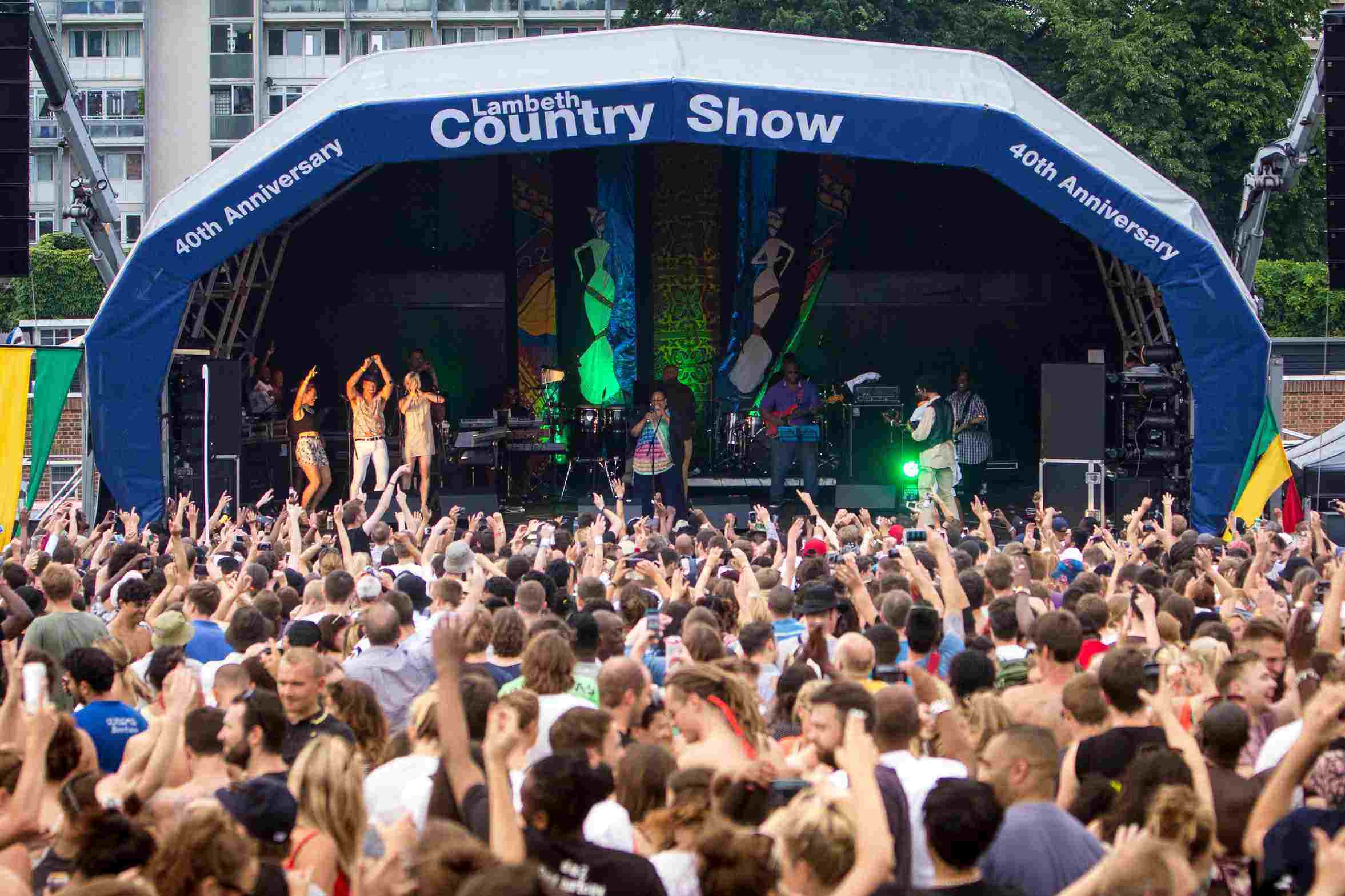A couple of weeks ago, at the Lambeth Country Show, I witnessed something quite special - a group of young people from Lambeth taking over a community stage at the Festival with the explicit purpose of transforming the narrative about young people as “only interested in smoking, snorting or stabbing” (Guardian, 2018). With just five weeks in our talent incubation programme, we saw talks, live performances, an art exhibition and direct community engagement all designed to challenge the negative perceptions of young people in the eyes of the local community.
The weekend-long event was designed and produced by ten young people who live in communities where youth violence and gang crime impacts their daily lives, and for all of them was the first experience they’ve had using their own creativity to inspire a different internal narrative about what they’re capable of and where they might go in life.
Working with this young talent, speaking to people in the community and our client Lambeth Council, it was clear that creativity is such a powerful tool for building social cohesion within communities and helping to lift people out of adversity because it creates the cultural capital needed for them to make positive changes in their own lives (tangible work experience, cultural connections, confidence).
Ever since the festival I’ve been questioning why, in the age of social business and purpose marketing, the marketing industry hasn’t worked out that it has a massive opportunity to put community investment at the heart of its business strategy.
Clearly we need a clearer business case for why investment in community is imperative for business growth, and therefore why it’s a marketing department’s responsibility:
Firstly, a poorer society affects everyone’s bottom line. More unequal societies tend to have worse health, more violent crime, more political instability and more institutional corruption. (WEF, 2017) but in more equal countries, people are generally happier and healthier, there is less crime, more creativity and higher educational attainment. The Equality Effect, Danny Dorling, 2017. The Social Mobility Commission issued a report in 2016 which concluded that in Great Britain “for this generation of young people in particular, social mobility is getting worse not better.” It also said that it wasn’t just the poorest in society who faced barriers to progress.
This isn’t just a political issue. This is a business problem because more health problems, fewer people in work and lower education standards mean less spending power and fewer skilled, creative people to fill our talent pipelines.
Using creativity to create positive behaviour change and increase spending is our job. That’s why we get up in the morning, why we chose not to be a banker or a vet, or to open a florist. So then in the context of modern Britain with its increased youth crime, social isolation and mental health issues, it becomes our collective task to use creativity as a positive force to support young people in their social mobility and challenge the systems that create divisions in British society. Not just because it feels like the right thing to do but also because these are the biggest barriers to building a sustainable, growth economy.
To bring it down to the day to day this needs to be part of your current growth plan because two thirds of consumers right now decide whether to buy (or boycott) a brand based on its position on a social or political issue. (Edelman, 2018). And from all the conversations I have with the next generation of customers, creatives and activists this clearly isn’t going away, this is the new normal. The Gen Z consumer (read: your future customer) expects brands to contribute to society and help solve some of the biggest problems we face at a local level, from the mental health crisis to the decline of funding for youth services and youth clubs (Livity, 2019).
This won’t be achieved by a lightweight brand purpose campaign, this is about investing in communities and using your creative superpowers (and let’s be honest, budget) to impact positive change in your audience’s daily experience.

That might feel like a huge task but as senior marketers, here’s what we can do to deliver impact at scale:
Build a purposeful brand from the ground up
Use your creative prowess, marketing capabilities and budgets to collaborate with the communities your customers are in to create something that drives meaningful and long term change in society. Use this collaboration to understand your customers better, serve them better and then build your own brand purpose from it. The key to effective brand purpose work is authenticity and the way to do that is to talk directly to your customers’ experience, with them and for them. Learn from Nike who have a long heritage of connecting with local sports communities and created their successful Nothing Beats a Londoner brand campaign with this unique, local experience at its heart. This work unlocked a new conversation with youth communities across the capital and led to them sponsoring the London Youth Games this year, continuing to build their reputation as the brand for the inner athlete in everyone.
Too hard? Invest in local projects
Every day, thousands of people are working for free to try and solve the mental health crisis, stop youth violence, reduce loneliness - whatever problem we have I guarantee there are communities trying to solve it. What they need is support, inspiration, up-skilling and, importantly, funding. For example, Facebook focuses their investment in existing programmes that align with brand and community objectives and then work with these organisations to help them scale - recent examples include their partnership with the Diana Awards and Digify Africa.
Need a more direct link to your business? Invest in young, diverse talent
More creativity in society equals better social cohesion, fewer problems and a healthy economy. Invest in young talent from across the social spectrum and from diverse communities, bring them into your teams and spark an internal culture revolution that creates change from the inside out. Not to mention diverse teams having a 35% better commercially creative performance than those that aren’t diverse (Livity, 2016).
We have created a number of programmes to accelerate careers including Digify, which is a paid training and placement programme. With Google and the Marketing Agencies Association as founding partners, Digify is into its fourth year, supported by the GLA as part of London Mayor’s Digital Talent Programme and delivered in partnership with brands like Sky and Sainsbury’s.
It has been running since 2014 and is dedicated to getting more talent from ethnic minority backgrounds into the creative industries. The programme was one of the first paid initiatives looking to address the lack of representation in the industry, which has only 12.9% of individuals from ethnic minority backgrounds (IPA annual diversity survey 2017).
Cohorts of top talent are selected for their drive, entrepreneurial spirit and digital know-how to attend two months of bespoke digital marketing and soft skills training, before entering a six month paid placement within some of London’s most creative businesses, including agencies such as iris, RPM and Wieden and Kennedy, or in-house at leading brands such as Sainsbury’s and Sky.
By Katy Woodrow Hill, Strategy Director at Livity



